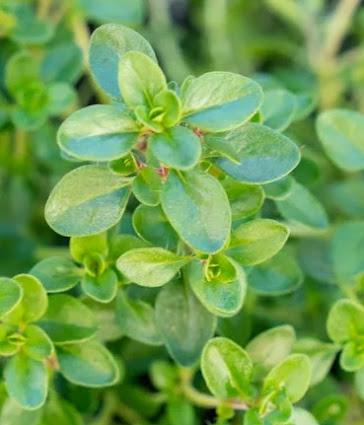Thyme’s common name may be derived from a Greek word meaning to fumigate, based on its use as incense, or may come from the Greek word thymon, meaning courage.
The genus Thymus are important medicinal plants, highly recommended due to a variety of therapeutic properties of their essential oils, normally known as Thyme oil.
Ancient Sumerian and Egyptian cultures employed thyme for medicinal purposes and to embalm the dead. Romans burnt thyme to deter dangerous animals, and used thyme to flavor cheese and alcoholic beverages. Roman soldiers bathed in thyme, as this was believed to provide vigor.
Thyme leaf is renowned for being a culinary spice and has also been used cosmetically and medicinally. It has also been commonly used as one of the culinary herb spices for adding flavor and deodorizing. The phenolic monoterpenes in thyme, thymol and carvacrol, are the primary compounds which contribute to the characteristic aroma of its essential oil.
Thyme contains many flavonoids, phenolic antioxidants like zeaxanthin, lutein, pigenin, naringenin, luteolin and thymonin. Fresh Thyme herb has one of the highest antioxidant levels among herbs. It is packed with minerals and vitamins that are essential for optimum health.
Thyme contains several types of essential oils and one of the major components of these essential oils is thymol. Thymol is contained in antiseptic mouthwashes.
Thyme essential oil mainly contains oxygenated monoterpenes, monoterpene hydrocarbons, sesquiterpene hydrocarbons and oxygenated sesquiterpenes like thymol (10–64%), as well as carvacrol (2–11%), γ-terpinene (2–31%) and p-cymene (10–56%.
In modern times, thyme oil is commonly used in manufacturing as a constituent of soaps, cosmetics, mouthwash and toothpaste. Red thyme oil is used in perfumes.
Thyme (Thymus vulgaris L.)
LEARN ABOUT FOOD INGREDIENT AND THE FUNCTION OF FOOD INGREDIENT. INGREDIENT IS A SUBSTANCE THAT FORMS PART OF A MIXTURE. IN COOKING OR FOOD PROCESSING, RECIPES SPECIFY WHICH INGREDIENTS ARE USED TO PREPARE A SPECIFIC DISH. MANY COMMERCIAL PRODUCTS CONTAIN A SECRET INGREDIENT PURPOSELY TO MAKE THEM BETTER THAN OTHERS.
Popular Posts
-
Acetylated Monoglyceride An emulsifier manufactured by the interesterification of edible fats with triacetin in the presence of catalysts ...
-
What is Food Additive? The broadest definition of a food additive is any substance that becomes part of a food product, either directly or ...
-
Substance that make a batter rise are called leavening agents. Leavening agents play a crucial role in the development of muffins. In making...
-
Carrageenan in Gummy Candies Gummy candies are included in a large category of confectionary products such as jellies, pastilles, and win...
-
Fenugreek flavor Fenugreek is a small European annual herb of the natural order Leguminoseae and now widely cultivated in southern Europe, N...




